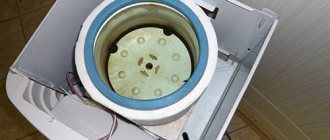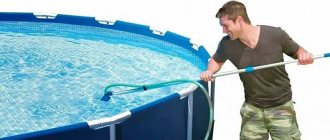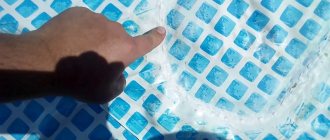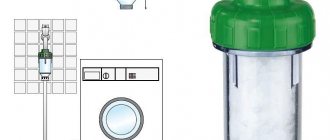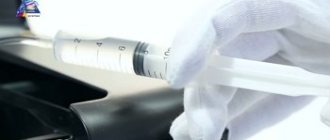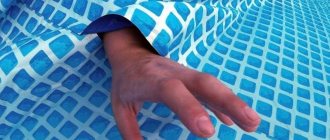A swimming pool at the dacha means water treatments and a pleasant pastime. But the water in this artificial hydraulic structure is not filtered, as is the case in natural reservoirs. Therefore, it gradually stagnates and begins to “bloom”, turning greenish. And an unpleasant smell begins to appear. Therefore, the owners of a reservoir are faced with a problem that creates one question - how to purify the water in the pool, what methods are used for this.
How and with what to clean the water in the pool Source actionquarterly.com
Pool water purification methods
They are divided into three types:
- mechanical;
- chemical;
- electrophysical.
Let us immediately make a reservation that the last cleaning method requires the installation of special, complex and expensive equipment. For country pools, such a device is an unnecessary luxury. Therefore, I will talk here about the first two methods.
Mechanical method
This type of cleaning includes all known hand-type tools. With their help, bacteria or germs cannot be removed, but collecting debris from the surface, dirt and sand from the bottom is not a problem.
The following devices are usually used:
- brushes used to collect leaves , poplar fluff , paper and other small debris ;
- nets , which are used in exactly the same way as brushes, only they can also remove foam ;
- a specially designed vacuum cleaner , the main purpose of which is to clean the walls of the pool and its bottom from dirt and sand.
It should be noted that all of the above devices and tools cannot collect silt, fine sand and dust. Although it is these tiny particles that lead to the darkening of the water, which violates the aesthetic side of the water.
Cleaning pool water from debris using a net Source lemmonhub.com
But you can fight these troubles too. To do this, special filters are installed in the pool system that are good at removing suspended matter. Today, manufacturers offer two types of filters installed in the purification system of artificial reservoirs.
- Sand type. It received its name only because it is filled with quartz sand . He copes well with the responsibilities assigned to him. But at the same time it additionally purifies the water from iron . Today this type of filter is very popular. The reason is low price and effective water purification. The only drawback is periodic cleaning of the device with high water pressure. This is not possible at all dachas. Experts recommend installing sand filter devices on inflatable pools . The water in them just changes more often.
Sand filter for pool Source maja-dacha.ru
- Cartridge type. It got its name because the design of the device includes a removable cartridge made of filter material. This type of filter is expensive, but it also purifies water more effectively than a sand filter. It is recommended to install devices of this type in a frame pool cleaning system. In addition to the high price, there is another drawback - replacing cartridges, which are not cheap. The latter cannot be washed and installed back into the housing.
Cartridge filter for pool Source letsstroy.by
Chemical method
So, let's move on to the topic - how to clean a swimming pool at the dacha, and move on to the most effective method - chemical. It is this method that can get rid of bacteria and other microorganisms that quickly multiply under the influence of sunlight, turning the water greenish.
Chemicals for swimming pools Source 2gis.ru
See also: Catalog of companies that specialize in swimming pools and equipment for them.
Today the market offers several fairly effective chemicals that are very popular among summer residents. Let us add that they are presented in the form of tablets and powders.
- chlorine-based cleaning products . They are popular, and there are two reasons: the low cost of the product and the quick disinfection of water . Side effect is a strong unpleasant odor . In addition, doctors do not recommend using them in pools whose owners are allergic . At the same time, chlorine dries out the skin and has a negative effect on the color of swimsuits and swimming trunks.
- Products based on bromine . An excellent disinfectant that quickly cleans large volumes of water. At the same time, it does not emit odors.
- Perhydrol . It is essentially a 37 percent aqueous solution of hydrogen peroxide . All owners of country pools assure that a better solution cannot be found. First of all, it's inexpensive . Secondly, it not only kills microorganisms, it also cleans the bottom and walls of pools from mucus, and the water from turbidity. In addition, perhydrol enriches water with oxygen .
Perhydrol - hydrogen peroxide for purifying pool water Source sml-volgograd.ru
It must be added that the above preparations cannot cope with dirt and increased turbidity. For this purpose, other chemicals are used, which belong to the category of coagulants and flocculants. They act as a binder, that is, they envelop the smallest particles, collect them in peculiar colonies and fall to the bottom in the form of sediment. After which the latter just needs to be collected with a vacuum cleaner. A prominent representative of the coagulant is a product called “Aquadoctor”.
Covering. Insulation
How to cover a frame pool? How to insulate? Water itself can retain heat for a long time. To keep it at the required level or accumulate, and also to keep the contents clean, it is recommended to cover the pool. The cover also prevents evaporation, which helps reduce chemical costs.
Let's consider several options for coverings for frame-type pools:
- Film covering.
- Trampoline cover.
- Polycarbonate covering, pavilion.
In this method, a solar heat-saving film with a bubble structure is laid on the surface of the water. The light one is used only to retain heat, the dark one absorbs sunlight, thereby slightly warming the water. As a result, water does not evaporate, heat does not dissipate in the air, and the bowl itself is protected from large debris.
In this case, a thick canvas is thrown over the pool, which is attached around the perimeter to special fixing bolts. This coating also helps maintain water temperatures, but is labor-intensive to install.
It is an arched aluminum structure with polycarbonate walls. How to cover a frame pool with polycarbonate? This structure can be applied to pools of any size and shape, and can be chosen in any color tone. The structure runs on rails located along the pool. Locking doors are built into it.
This option will allow you to not depend on the weather, protect against debris and animals getting inside, and with additional heating it will be possible to use the pool in the cold season. Among the disadvantages are the relative bulkiness of the structure, the need for preliminary preparation of the building surface on which the rails will be located, and the high price.
How to properly care for your pool
In principle, there are no complex cleaning measures. Here are some tips to help you keep your pool in good condition. This applies not only to water, but also to the internal surfaces of an artificial reservoir.
- install a filter in the pool .
- Every day, or better yet twice a day, garbage from the surface of the water surface . Leaves that begin to rot under the influence of sunlight are especially harmful Pay attention to insects wasps , bees , bumblebees , earwigs and other equally dangerous insects are especially dangerous
- Twice a week it is necessary to treat the water with chemicals . This is how you can protect a pond from water blooming.
- If your pool is inflatable , then change the water in it at least once a week.
- If children under 3 years of age swim in the pool, then the water in the pool must be changed more often.
I would also like to talk about rust. Or rather, about water that has a high content of iron salts. It is these salts that color the water yellowish and sometimes brown. You should not swim in such a pool. Iron in this form has a negative effect on the skin. Therefore, we need to get rid of iron.
Rusty water in the pool Source vseonauke.com
The simplest option is to let the water settle in some other tank and then pump it into the pool. You can use a special coagulant that is added to the filled bowl. The chemical binds iron salts, which precipitate as flakes. All that remains is to remove the last one with a vacuum cleaner.
Step-by-step instructions on how to prepare your bowl for the season
At the end of the winter period, the pool needs to be re-opened and prepared for the warm season according to the following algorithm:
The water is drained from the bowl after the ice has completely melted. If there are ice blocks, it is not recommended to break them with a crowbar. This will damage the walls.- It is necessary to wash the pool, ridding it of debris and plaque.
Contaminants are removed using professional or folk remedies. It is prohibited to use metal brushes. - The plugs are removed and wiped.
- Installation of spotlights with preliminary cleaning of terminals. The power must be turned off.
- Installation of handrails and stairs after cleaning all threaded connections.
- Assembly of pumping and filtration equipment. The rubber seals must be intact. The pump terminals are lubricated with electrically conductive paste.
- Installation of disinfection equipment. The UV unit is switched to bypass to prevent contamination of the lamp housing.
- Filling with water a few centimeters above the skimmer.
- The filter barrel is washed several times.
- Checking the acidity values and bringing them to the desired level.
- The next day, vacuum the bottom of the pool and rinse the filter.
- Turning on the filtration system and ultraviolet installation.
Cleaning the walls
If the time has come to clean the pool of greenery, dried black and limescale, you must use special preparations that will help clean the tank quickly and efficiently.
In addition, you need to decide on the method of cleaning the walls, which can be:
- chemical;
- mechanical;
- electrophysical.
During the course of work, all these methods can be combined; it is not necessary to use only one. This tandem will make it possible to perform better cleaning and get rid of more dirt and germs. But before you start washing the walls, you need to remove all large and small debris from the water. And only after draining the water can you start working.
What to do with contaminated bowl surfaces?
Mechanical cleaning is indispensable. It is necessary to prepare special compositions for destroying and removing rust, brushes and sponges. For a large pool bowl, you will need a rotary machine, which will simplify and speed up the process.
Stages of surface cleaning
- Drain the water and apply Vertolin to the surface or any other composition to dissolve salts and rust. It will be more convenient to use a spray bottle, which evenly distributes the composition on the surface.
- Under the influence of the product, after 10-15 minutes the rust will soften, and it can be washed off with a sponge and soapy water.
- Heavy deposits can be rubbed off with a brush and the composition can be reapplied.
- After cleaning, you need to rinse the surfaces with running water, preferably 2-3 times.
Anti-rust products contain acid. During the procedure, you need to wear skin and respiratory protection.
Electrophysical methods
Such methods reduce the amount of chemicals used. They are used to disinfect water and provide a long-lasting effect.
Ozonation
This method is based on the use of a special device - an ozonator. It acts on oxygen using an electrical discharge, resulting in the formation of ozone. This gas exhibits strong oxidizing properties. It kills viruses and pathogenic microorganisms.
The ozonizer purifies the water and gives it a fresh smell. During the ozonation process, individual particles coagulate into larger compounds. Most of the bound reagents are subsequently retained by the sand filter, and the oxygen is returned to its original state.
- The disadvantage of this cleaning method is that installing an ozonizer is quite expensive.
Ultraviolet lamps
The use of UV modules is a fairly effective way to disinfect water and fight algae, which is used in combination with other methods. The use of such lamps allows you to reduce the frequency of cleaning and the consumption of chemicals without changing the pH value. The device operates from the electrical network.
The degree of water transparency is important. Therefore, such processing must be preceded by mechanical cleaning. It is not economically profitable to use a lamp in large pools. Another disadvantage of the ultraviolet irradiation method is the lack of long-term results.
Ionization
Ionizer is an electrolytic unit used to saturate H2O with Cu2+ and Ag+ ions. Inside the device are electrode chambers with copper and silver plates through which water passes. Silver disinfects, copper causes the death of algae, has an oxidative effect, and promotes the transformation of small particles into flakes.
The advantage of the method is the crystal purity of the water and the absence of a specific odor. Silver particles can remain active for several weeks. It is worth considering that water ionization does not affect all types of microorganisms. Therefore, you cannot refuse dry cleaning.
Household models are compact, but designed for small bodies of water (up to 60 m3). Devices for industrial use are capable of cleaning large tanks, but have impressive dimensions.
Chlorine generators
Highly effective and safe method. These units are designed to break down table salt (non-iodized) through electrolysis, which is previously dissolved in water. 3 kg of product is consumed per cubic meter of water. As a result of the breakdown of salt, chlorine is formed. The device is equipped with a flow sensor. If there is a lack of salt, the display will show error 91. The advantage of this method over conventional chlorination is the absence of an unpleasant odor. The device is connected to a filter pump.
A significant advantage of chlorine generators is observed only when used in relatively large bowls. Installing the device on pools up to 4 m in length does not give the expected effect.
Features, tricks and tips from professionals for cleaning a swimming pool
A swimming pool is a complex hydraulic structure designed for water procedures, swimming, and simply for having a great time. In order to keep the pool clean, it must be washed periodically using special detergents and methods. The main problem of pollution is water hardness.
It is from this that plaque appears on the walls of the pool, and after that microorganisms, algae and other elements form in it. All of them have a detrimental effect on the health of the human body, and must be gotten rid of.
It is possible to wash the pool yourself, but to do this you need to take into account all its features, dimensions and the material from which the pool itself is made. This process is labor-intensive, but has its own tricks and little tricks, and here are a few of the most important ones:
- When purchasing a detergent, carefully study its characteristics and method of application so that you do not damage the pool coating;
- Rinse off the detergent with plenty of water to prevent corrosion that the cleaner may cause;
- If the pool has stainless steel parts, then it is better not to clean them with oxidizing agents, this will lead to coloration of the metal.
- It is better to treat limescale deposits monthly, this will lead to a lasting result and your pool will always be clean.
If you don’t want to do this yourself, you can entrust the care of your pool to the professionals of our company.
What to wash with
You can wash the pool bowl before filling it with water using any available means:
- rags;
- soft brushes;
- mops;
- rods with brushes and rags;
- automatic equipment;
- manually.
The main condition is that the walls of your water bowl are disinfected, sparkling clean and do not arouse suspicion.
It is better to repeat the washing procedure, then pour running water from a hose, which should be used to thoroughly rinse off all stains and chemical residues. Some summer residents use liquid soap, shampoos, and special surface cleaning products. This can also be done, but not every household chemical product has full antibacterial properties. Therefore, read the instructions and labels. Otherwise, your pool cleaning will be ineffective, and the water will require general cleaning within a week.
IMPORTANT! Do not use acidic and alkaline preparations at the same time! An acidic preparation can only be used after the alkaline has been completely removed from the surface, and vice versa! Do not use household chemicals containing ammonia or phosphates to clean the pool!
